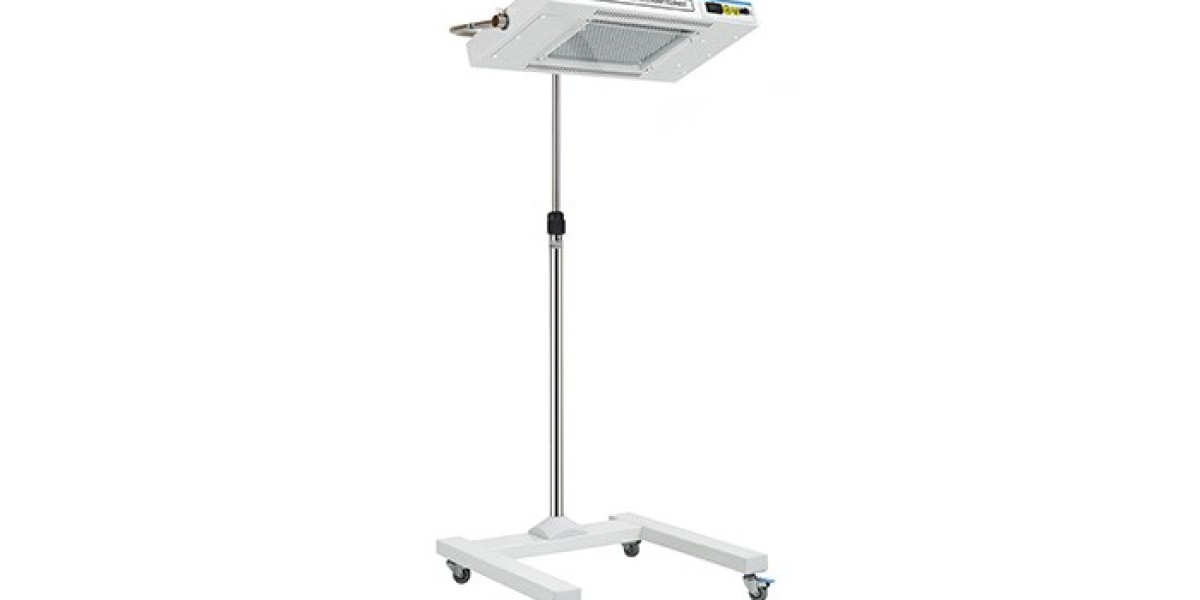Phototherapy Light for Jaundice and Skin Care
Introduction
Healthcare technology has advanced rapidly, introducing safe and effective treatments for conditions that once required invasive procedures or long-term medication. One of the most remarkable innovations is phototherapy light, a non-invasive treatment that uses specific wavelengths of light to promote healing.
Phototherapy is widely used in two major areas: neonatal jaundice and skin care treatments. Both applications highlight the power of controlled light in medical therapy, offering patients a safer, faster, and more reliable recovery.
This article explores how phototherapy light works, its role in treating jaundice and skin conditions, the different types of phototherapy lights available, and the future of this technology in modern healthcare.
What is Phototherapy Light?
Phototherapy light is a medical device that delivers controlled doses of light to treat health issues. Unlike medications, which may cause side effects, phototherapy is a non-invasive and drug-free method of treatment. The wavelength, intensity, and duration of light exposure vary depending on the condition being treated.
Phototherapy works by triggering biological processes in the body:
For Jaundice, Light breaks down excess bilirubin in the blood.
For Skin Care: Light penetrates the skin to repair cells, reduce inflammation, and improve overall skin health.
Phototherapy for Jaundice
Understanding Neonatal Jaundice
Neonatal jaundice is one of the most common conditions in newborns, caused by excess bilirubin in the blood. Babies often develop yellowing of the skin and eyes, which, if untreated, can lead to serious complications.
How Phototherapy Light Helps
Phototherapy light, particularly blue light at 460–490 nm, is highly effective in breaking down bilirubin into water-soluble compounds that can be excreted naturally by the baby’s body.
Advantages of phototherapy for jaundice include:
Non-invasive and painless
Safe for newborns
Highly effective in reducing bilirubin levels
Quick results, often noticeable within 24–48 hours
Types of Phototherapy Devices for Jaundice
LED Phototherapy Units: Energy-efficient, long-lasting, and safe for infants.
Fluorescent Lamps: Traditionally used but less common today due to shorter lifespan and higher energy use.
Fiber-Optic Blankets: Allow babies to be treated while staying close to their mothers, ensuring comfort during therapy.
Phototherapy for Skin Care
Skin Conditions Treated with Phototherapy
Phototherapy is not limited to newborn jaundice; it is also a powerful tool in dermatology. Dermatologists use different wavelengths of light to treat various skin concerns, such as:
Acne: Blue light targets acne-causing bacteria and reduces oil production.
Psoriasis and Eczema: Narrowband UVB light reduces inflammation and slows abnormal skin cell growth.
Vitiligo: Stimulates pigmentation in affected skin areas.
Anti-Aging Treatments: Red light stimulates collagen production, reduces wrinkles, and rejuvenates skin.
How Phototherapy Light Works on Skin
Blue Light: Kills acne-causing bacteria.
Red Light: Stimulates collagen and tissue repair.
UVB Light: Regulates immune system activity in skin diseases.
Near-Infrared Light: Improves blood circulation and reduces inflammation.
Benefits of Skin Care Phototherapy
Non-invasive and painless
Suitable for sensitive skin
Minimal side effects compared to medications
Improves skin tone and texture
Accelerates wound healing and scar reduction
Key Benefits of Phototherapy Light
1. Safe and Non-Invasive
One of the greatest advantages of phototherapy is its safety. It does not involve surgery or harsh chemicals, making it suitable for patients of all ages, including newborns.
2. Quick and Effective Results
Whether used for jaundice or skin conditions, phototherapy often delivers noticeable improvements within a short period.
3. Versatile Applications
Phototherapy is effective in multiple medical fields, from pediatrics to dermatology, and even in wellness and cosmetic care.
4. Fewer Side Effects
Unlike medications that may cause long-term complications, phototherapy has minimal side effects when administered properly.
Safety Considerations in Phototherapy
While phototherapy is generally safe, proper usage is essential to avoid risks. Some precautions include:
Protective Eyewear: Babies and patients must wear eye protection during light exposure.
Controlled Exposure Time: Overexposure can cause skin dryness or burns.
Medical Supervision: Always consult a doctor before starting phototherapy, especially for skin treatments.
Best Practices for Effective Phototherapy
To ensure optimal results, patients and caregivers should follow these guidelines:
Consistency Matters: Regular sessions are more effective than irregular treatments.
Monitor Progress: Track bilirubin levels in jaundice patients or skin improvement in dermatology cases.
Use Certified Devices: Always choose FDA-approved or medically certified equipment.
Combine with Other Care: Phototherapy is often most effective when paired with proper skincare routines, hydration, and medical monitoring.
The Future of Phototherapy Light
The demand for safe, effective, and non-invasive treatments is increasing, and phototherapy light is at the forefront of this trend. With advancements in LED technology, modern devices are becoming more energy-efficient, portable, and affordable.
Future developments may include:
Personalized phototherapy devices for home use.
Combination treatments with lasers or topical medicines.
Expanded research into new wavelengths for treating advanced skin conditions.
These innovations will make phototherapy even more accessible and reliable for both hospitals and individual users.
Conclusion
Phototherapy light is a revolutionary medical technology that has transformed the treatment of both neonatal jaundice and skin care conditions. Harnessing the natural healing power of light, it provides a safe, non-invasive, and effective solution for patients of all ages.
For newborns, phototherapy light is often the first line of defense against jaundice, offering life-saving benefits in a gentle and painless way. For dermatology patients, it provides relief from acne, psoriasis, eczema, and even signs of aging—without the risks associated with harsh chemicals or invasive procedures.
As technology continues to evolve, phototherapy light will remain a cornerstone of modern healthcare and skincare, ensuring safer, faster, and more effective healing for millions of patients worldwide.






